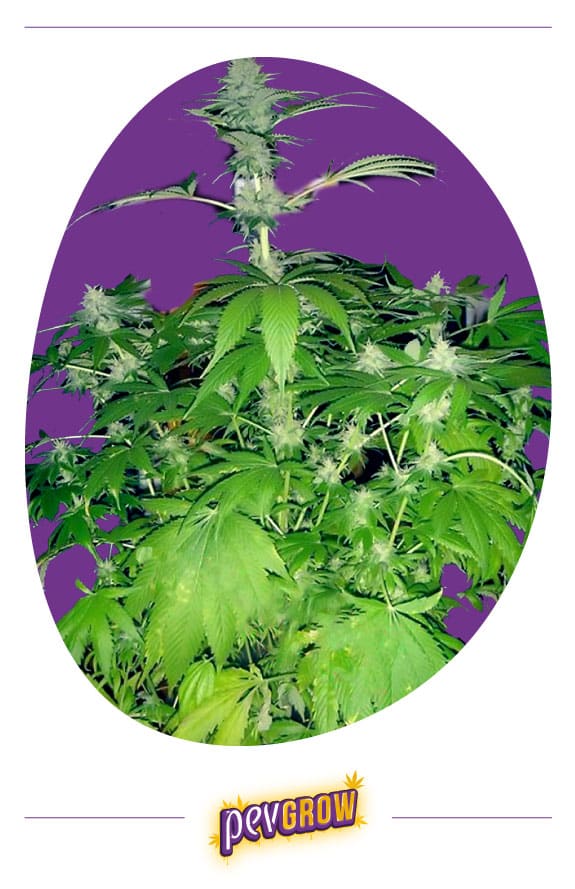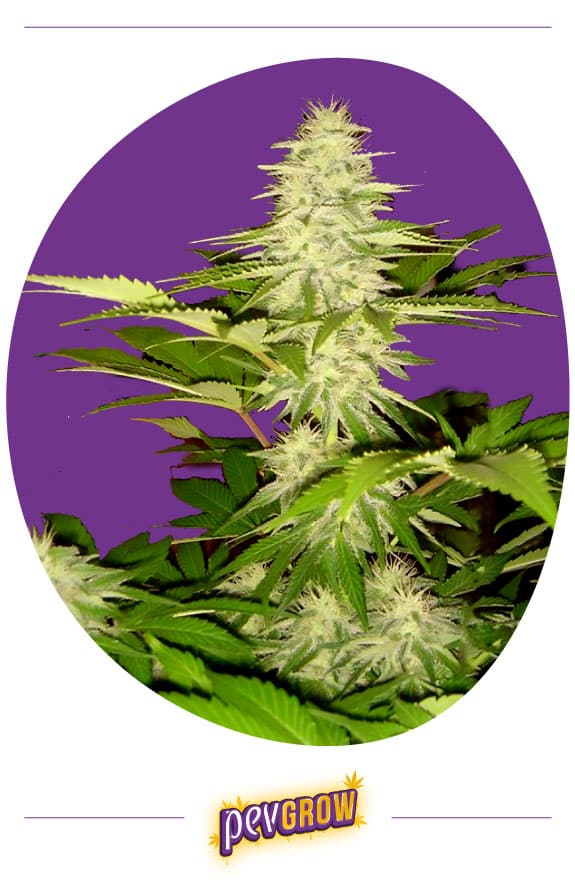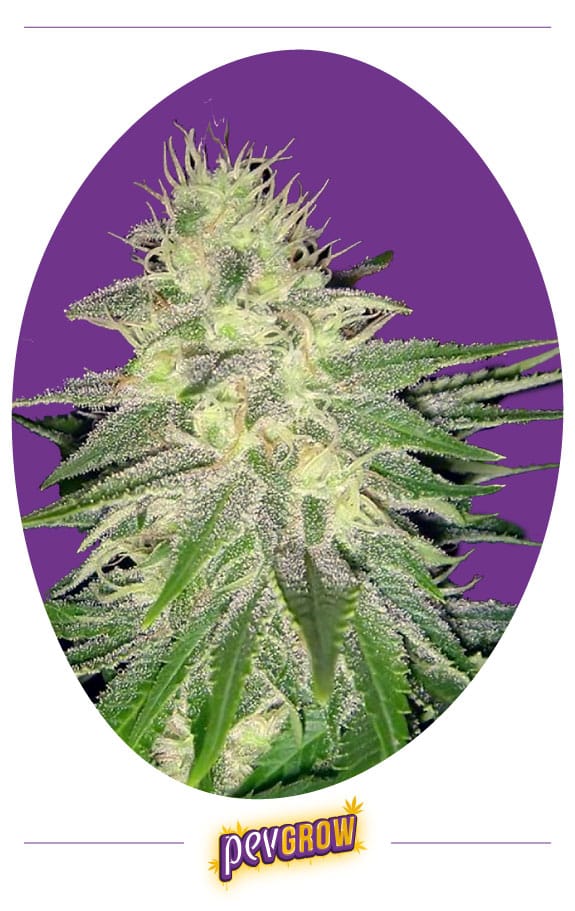

05-08-2022 09:00:43 - Updated: 5 August, 2022
We are in full bloom of the marijuana plants, in the previous article of this cultivation follow-up we reviewed weeks 3 and 4 of this phase, which constituted the intermediate stage between the pre-flowering and the fattening phase of the buds, and today we are going to see the changes that the plants give during weeks 5 and 6, that is, the period in which the buds take on more volume, density and weight.
Throughout these 2 weeks the plants are filled with trichomes everywhere, not only in the flowers, you will see that resin appears on the leaves attached to the flowers, some petioles, and there are even genetics that produce it even on the main trunk . For this reason, the smell increases greatly during weeks 5 and 6 of flowering, and it is something that we have to watch out for so that it does not represent a problem.
As we always remember, all the varieties do not flower at the same speed because it depends on the genetics of each one, but as a general rule during these 2 weeks the buds will fatten up the most. In addition to genetics, you also have to take into account the growing conditions and the health of the plants, apart from some tips that we are going to see in this article, so I recommend that you read it carefully.
–Vegetative growth phase of cannabis, everything you need to know
–Week 1 and 2 of the flowering of marijuana plants
–Weeks 3 and 4 of cannabis flowering
–Weeks 7 and 8 of marijuana flowering
⭐ Bud fattening phase
When do the buds get fatter? This is one of the questions that we get asked the most, and it does not have a definitive answer because it depends on the specific variety that is grown. Indica strains and fast-flowering hybrids tend to fatten up their buds the most between weeks 4 and 7 of the flowering cycle, but sativas and later hybrids will not enter this phase yet. For most commercial genetics, weeks 5 and 6 of flowering is when the buds fatten the most, but it is also possible that even within the same variety, because faster and slower phenotypes can appear.
During weeks 5 and 6, the plants take advantage of all their energy to generate a greater number of inflorescences, and little by little they fill with flowers the spaces between nodes that have widened during the growth spurt of the pre-flowering phase. Now you can no longer see only the pistils that come out of the buds, the calyxes are visible and increasingly numerous, and on top of these new pre-flowers appear that little by little join the nodes and tighten the flowers.
⛳ Products to fatten buds
I remind you that the ideal is to always follow the recommendations of the cultivation table provided by the brand of fertilizers you are using. Regardless of this, during weeks 5 and 6 of cannabis flowering, plants need a greater amount of nutrients than in any other phase of cultivation. The most normal thing is to combine the flowering base fertilizer with the flowering stimulator, and the fattening of the buds, and it is highly recommended to add enzymes to avoid accumulation of salts in the substrate.
Most fertilizers for fattening buds are of mineral origin, and honestly they are the most effective in this regard. But we already know that with this type of fertilizer, quality is not as high as when plants are fed with organic nutrients, so we should not go overboard with their use. You also have the possibility of using fertilizers of organic origin for this mission, which although they do not increase the weight of the flowers as much, the organoleptic properties will be better. If you prefer these products, you can choose between Biobizz’s bud fattener B.A.C. or Green Sensation by Plagron among others. You also have the possibility of using homemade fertilizers, although you have to do it right to avoid causing problems.
✨ Homemade fertilizer to fatten buds
Many clients ask us how can I fatten buds naturally with a homemade fertilizer? And it is that not everyone can afford the investment involved in the nutrition of cannabis with commercial products, although it is not very high and it is really the most recommended. It is about achieving high levels of phosphorus, potassium, or sugars, among other things, but with products that everyone can have at home.
Sugar can be good for fattening buds, because the plants convert carbohydrates into sugars that help increase the weight of the harvest, but it cannot be applied in any way because otherwise the plants will not be able to assimilate it, and it can even be detrimental. The mead is one of the best ways to give plants sugar, and it serves as a flowering stimulator and as a natural fertilizer to fatten up buds. You only have to mix approximately 10 ml of honey in 4 liters of water, shake well to homogenize the mixture, and apply in irrigation from the second week of flowering until 10 days before harvesting. Banana tea, sugar cane, and wood ashes also work very well as homemade bud fattening, and if you want to delve deeper into this topic, I recommend you read this article on our blog that explains how to make your own homemade fertilizers for growing marijuana plants.
👌 Tips to fatten marijuana buds
- Keep the substrate as clean as possible of salts until reaching this phase, you can use enzymes or wash the roots after the photoperiod change.
- Increases CO2 levels, plants can assimilate up to 1500 PPM without problems, and in the natural environment there are only 300 or 400 PPM.
- Calibrate the PH and EC meters to obtain the most accurate measurements and thus be able to fine-tune nutrition.
- Use quality products, although homemade fertilizers can be applied as we have seen before, it is best to use specific commercial fertilizers.
- The greater the light power, the greater the weight of the buds. If you grow with HPS lights, remember that you have to change the lamp every 3 crops or 1 year.
- Increase ventilation and try to reduce humidity as much as possible to avoid the appearance of fungi. This does not increase bud production, but can mean less loss in cases of problems.
🚀 Weeks 5 and 6 of cannabis flowering in indoor cultivation step by step
This entry is the continuation of a series of articles that make up a day-to-day cultivation follow-up. If you haven’t seen the previous articles, now is a good time to do so, but if you’re following it, you’ll already know that we’re on day 28 of the flowering phase. I remind you once again that the most advisable thing is to follow the indications of the cultivation table of the brand of fertilizers that you use to feed your plants, but always knowing that not all plants go at the same speed or eat the same amount of food, so we recommend observing the health status of the plants daily to adapt the dosages and times to their needs.
- Day 29: The fifth week of flowering begins and with it the fattening phase of the buds. These days will mark the success or failure of the harvest, and for this reason special emphasis must be placed on monitoring possible deficiencies, excesses, or blockages of nutrients. If you grow indica varieties or fast hybrids, from this day we will begin to apply the dosages referring to the fifth week of flowering of the cultivation table.
- Day 30: The plants are flowering at full speed, although there are no compact buds yet. The pistils look very white and there are more and more, so little by little the nodes join with the new blooms. Look at the lower parts of the plant to check its leaves, since if phosphorus or potassium deficiencies appear, they will appear in the oldest and lowest leaves.
- Day 31: The fastest varieties will show a good amount of resin at this time, but the best in this regard is yet to come, because throughout weeks 5 and 6 of the flowering phase most genetics produce more trichomes than at any other stage of cultivation.
- Day 32: You will see that some of the pistils are darkening while other new white ones appear, this is totally normal because they remain white while they are fertile, but when they stop being white they wither. When the pollen reaches the pistils they also darken, as well as when they are handled.
- Day 33: If you are growing sativa or mainly sativa genetics, it is possible that they have not yet started the fattening phase of the buds, and even some of them will not have stopped growing. In this case, it may be interesting to check the depth of the light to prune the undersides, and it is more interesting to follow the recommendations of week 4 of the cultivation table.
- Day 34: This day marks a week since the last application of preventive phytosanitary products, so today it’s time to give the next one, but only if you grow varieties with more than 11 weeks of flowering. If you grow varieties with less than 9 weeks of flowering, your plants will now begin the stage of greater fattening and compaction of the buds.
- Day 35: The fifth week of flowering is over and the fastest strains will have already passed the first half of this phase. These plants will already begin to compact the buds, and the changes begin to be very evident on a daily basis. Now is when they can assimilate more nutrients, but it is also when you have to be more vigilant because problems can lead to a decrease in the harvest.


- Day 36: The sixth week of the flowering phase begins and the buds begin to have a considerable weight, and if you did not put stakes or any other support, I recommend doing so, because you have to know that the plants produce more when their stems are reinforced. It can also be a good time to defoliate those leaves that do not allow light to reach certain buds.
- Day 37: Continue to observe the plants daily to rule out nutritional problems, pests, fungi or other diseases. In the case of seeing symptoms of a pest, you will no longer be able to use sprayed insecticides so as not to damage the buds, but you can use natural predators to eliminate the pest through biological control.
- Day 38: During the sixth week of flowering, many products are used, including the base fertilizer, the stimulator, the fattening of buds, and the additives that the fertilizer brands may recommend. For this reason it is very important to check the EC after adding all the products to the irrigation, and in some cases it may be interesting to lower the recommended doses.
- Day 39: Not all genetics make big or dense buds, many sativa varieties or mostly sativa hybrids don’t get to squeeze the buds like indica varieties or hybrids. Even within the same variety there may be phenotypes that are more productive than others, except if they are clones from the same mother. There are also strains that don’t compact the buds until the last 2 weeks of flowering, so don’t worry yet if you see that the buds of your plants do not fatten or tighten as they should.
- Day 40: If you give the same nutrient solution to all the plants, it is possible that some of them show deficiencies while others are healthy. This may be due to several reasons, because as we have seen before, not all plants eat the same, but it may also be due to the amount of light they receive. It is not a bad idea to rotate the plants to place those on the perimeter in the center and vice versa, especially if you grow with bulbs that concentrate a lot of light in the center such as HPS.
- Day 41: On this day we complete another week since the last application of phytosanitary products, and in the event that you are growing varieties with more than 12 weeks of flowering, today would be the next week. I remind you that you have to alternate the products weekly, and if you gave insecticide last time, today it will be fungicide. We continue to apply the cultivation table as long as the plants show a healthy color, otherwise we will adjust the doses depending on the state of the plants.
- Day 42: We finished the sixth week of flowering and reached the final stretch of the crop. In the case of growing genetics with 8 weeks of flowering with mineral fertilizers, we will soon have to wash the roots prior to harvest. To determine the exact moment, it is best to start checking the state of maturation of the trichomes from the seventh week of flowering. On this day we will give the recommended fertilizations for the last time in week 6 of flowering and from day 43 we will start with week 7 of this phase.


✅ Conclusion
In this article we have reviewed the fifth and sixth week of flowering of marijuana plants, seeing the changes that occur during this time, which coincides with the fattening phase of the buds, surely the most important part of the crop. Remember that all the recommendations are indicative and you must always observe the health status of the plants to adjust the diet to their needs. In the next article we will see the seventh and eighth week of flowering, I hope to see you here again.
🎯 Frequent questions
In which week do the buds get fatter?
This is very relative, because it depends on the genetics of the plants, the parameters of the crop, and the phenotype in question, but it could be said that in general most commercial varieties fatten up their buds more during the sixth week of flowering, because the Most of these strains need around 60 days to flower.
What is the best bud fattener?
Products for fattening buds are formulated based on phosphorus and potassium, so it could be said that the best ones are those that contain a greater amount of these macroelements, such as Grotek’s Monster Bloom, which contains an NPK of 0-50- 30. However, there are several leading brands in the sector such as Canna, Atami, or Plagron, among others, that offer bud fattening based on a formula that has been proving its effectiveness for more than 2 decades, PK 13-14.





